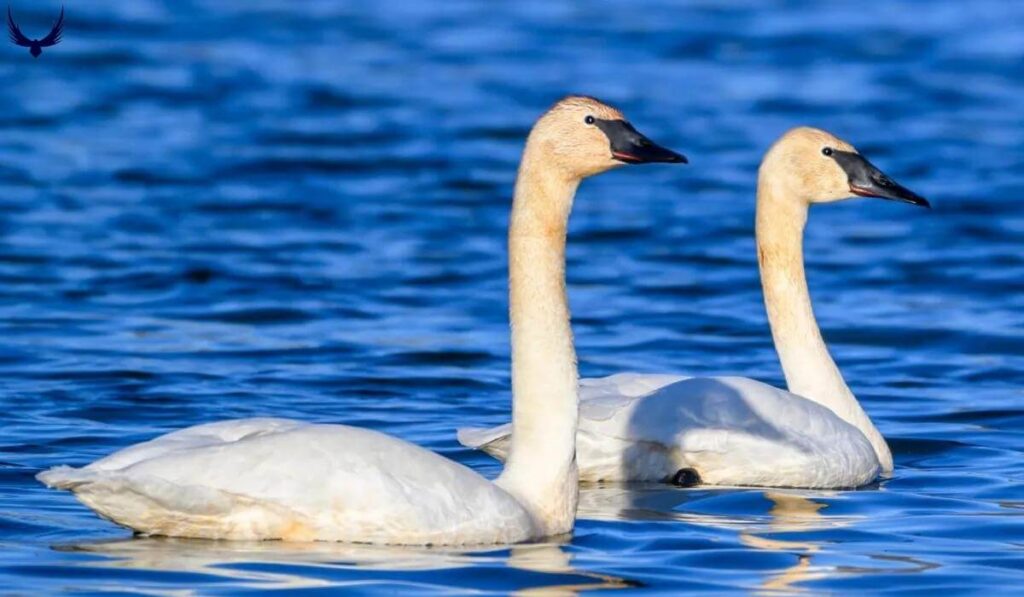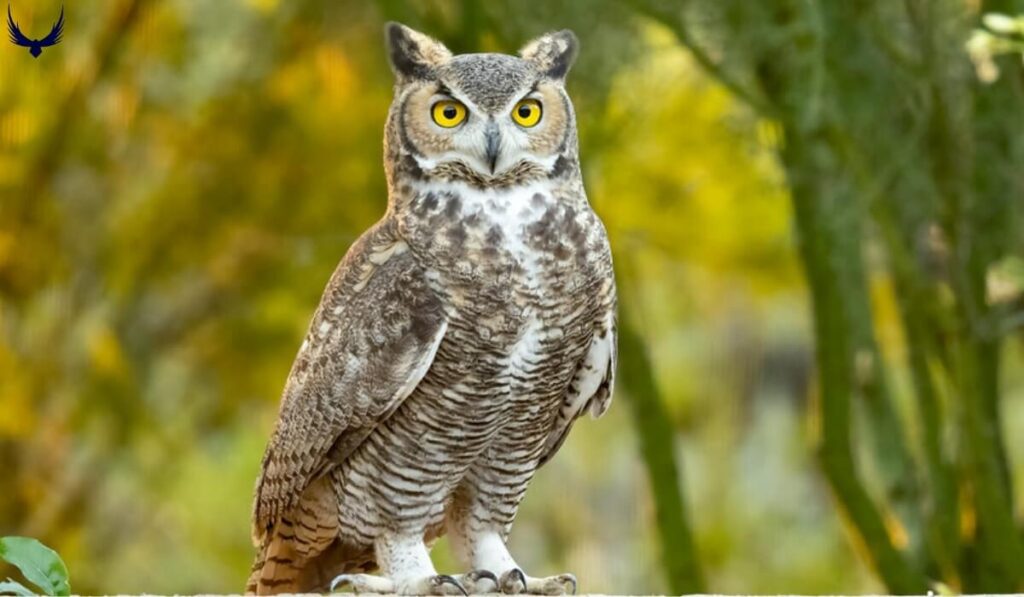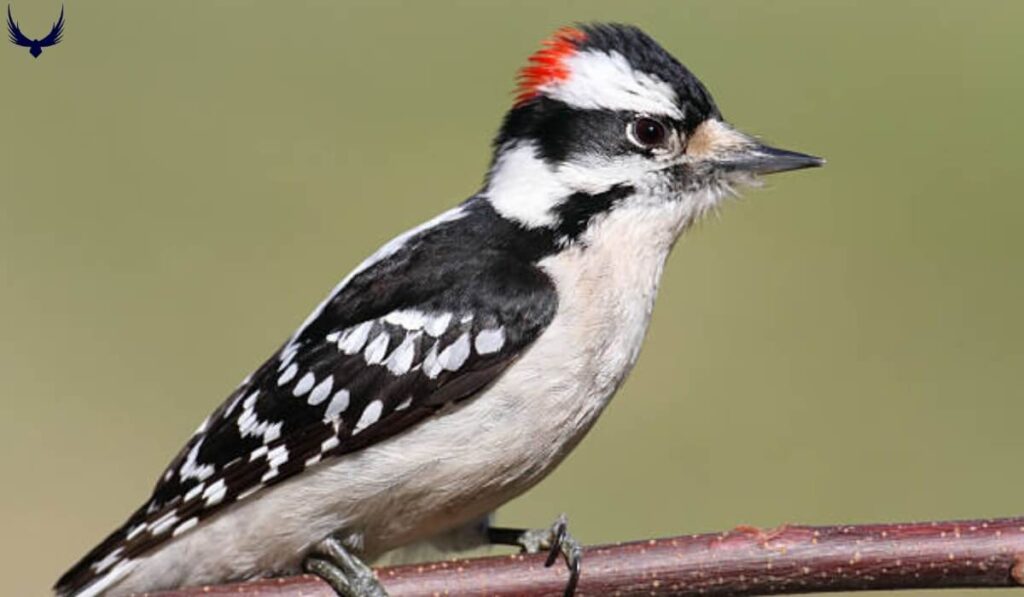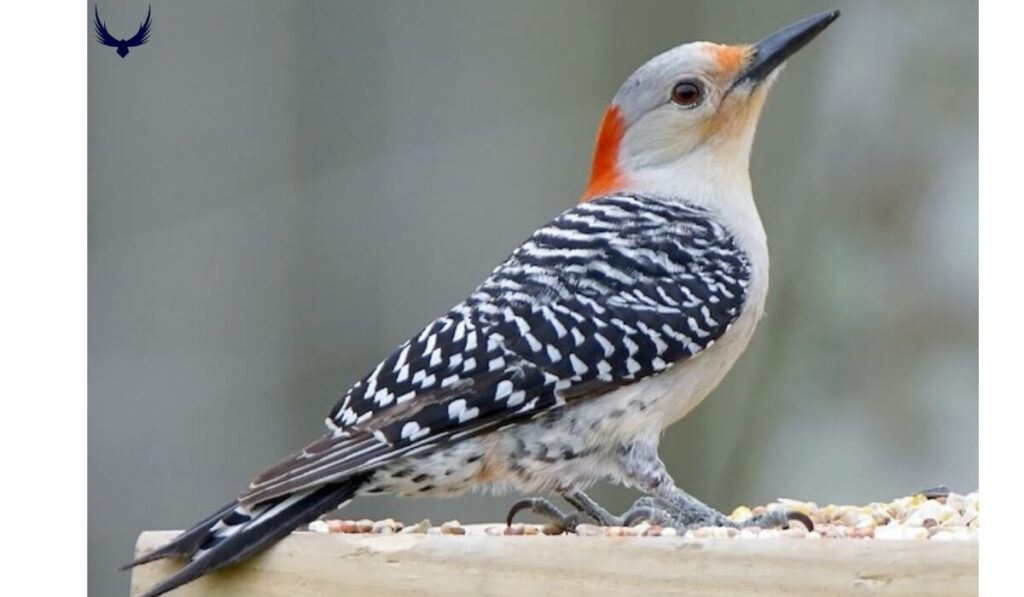Michigan is a great place for bird lovers. The state has different landscapes that birds like. There are many types of birds in Michigan, from ones that live there all year to ones that visit during certain times.
This guide explores the birds of Michigan, looking at their lives and behaviors. Whether you love birds or just want to learn more about them, let’s discover the world of Michigan birds.
Waterfowl Birds of Michigan
Here are the few waterfowl Michigan birds:
Canada Goose
The Canadian Geese are large waterfowl Michigan birds. It has a black head and neck with a white chin strap, a brown or grayish-brown body, and webbed feet. It is 30 to 43 inches long, with a wingspan of 50 to 66 inches and weighs 6 to 14 pounds. The male geese are usually larger than females.
Canada Geese are found all over North America, including urban areas, parks, and fields. They like wetlands, lakes, ponds, and marshes for breeding. They are social birds that often travel in large groups in V formation, especially during migration. They mate for life and build nests near water. They eat grass, plants, and crops.

Breeding season for Canada Geese is in early spring. Females lay 5 to 7 eggs, which hatch after about 28 days. Both parents take care of the young goslings, who can walk and swim soon after hatching. The goslings stay with their parents for a few months.
The Canada Goose is a well-known bird in Michigan, found in various habitats due to its ability to adapt and thrive.
Mallard Duck
The Mallard Ducks, also known as Anas platyrhynchos, are a common waterfowl birds of Michigan. The males, called drakes, have a green head, brown chest, gray body, and black rump. Females, known as hens, are brown with a dark head and pale cheeks. Both have a blue wing patch with white stripes, a heavy body, and a flat bill.
Mallard Ducks are medium-sized, measuring 20 to 26 inches in length and weighing 1.5 to 3.5 lbs.
Mallard Ducks can be found in various freshwater habitats in Michigan, such as marshes, ponds, lakes, rivers, and city parks. They are adaptable birds, often seen in urban areas, and feed on plants, insects, and small aquatic creatures.
Mallards are known for their quacking sounds, especially the females. During the breeding season in early spring, females lay 8 to 12 eggs near water sources and care for the ducklings until they are fully grown.
Common Loon
The Common Loon is a large black-and-white bird with a thick bill found in Michigan. They have a black head, white breasts, and a checkered pattern on their back and wings. They are more grayish brown in non-breeding season.
They are one of the largest loon species, with a length of 25 to 36 inches and a weight of 6 to 12 pounds. They breed in northern Michigan and can be found on lakes and coastal waters during migration and winter.
Common Loon are excellent divers, known for their wailing calls and primarily eat fish. Breeding season is in late spring and early summer, with nests built near the water.
Trumpeter Swan
The Trumpeter Swans are large and majestic water birds of Michigan. It is the biggest native water bird in North America, with white feathers, a long neck, and a black bill.
Adult swans have a black face and no knob or yellow mark on their bill. Young swans are brownish-gray and turn white as they grow. They are heavy birds that can fly, with males weighing up to 35 pounds and females around 25 pounds. They have a wingspan of up to 10 feet.

In Michigan, Trumpeter Swans are mostly seen in the Upper Peninsula, especially in places like Tahquamenon Marshes and Seney National Wildlife Refuge.
Trumpeter Swan like wetlands, marshes, lakes, and ponds with lots of plants. They are known for their loud calls and are social birds that live in groups. They eat plants and can fly long distances.
Breeding season for Trumpeter Swans is in late spring and early summer. They build nests on the ground using plants, lay 5 to 7 eggs, and take care of their young until they are grown.
Michigan Songbirds
Here are the few Michigan Songbirds:
American Robin
The American Robin is a well-known bird in Michigan. It is medium-sized with a plump body, long legs, and a grayish-brown back, reddish-orange breast, and dark head with white eye-rings. Juveniles have black spots on their breasts.
American Robins are 8 to 11 inches long, have a wingspan of 12 to 16 inches, and weigh 2.7 to 3 ounces.
These birds are common in Michigan backyards, where they search for worms and bugs by standing on open areas and watching and listening for their prey. They use their bills to grab the worms, often pulling them out of the ground. In the winter, they mainly eat fruit from bushes and trees, such as crabapples and berries.
Robins are found in various habitats in Michigan, breed in spring and summer, and migrate to the southern US and Mexico in winter.
American Robin sing melodiously in the morning and build cup-shaped nests in trees with 3 to 4 light blue eggs. Both parents care for the hatchlings.
Black-Capped Chickadee
The Black-capped Chickadee is a small, hardy songbird commonly seen in Michigan all year. It has a round body, black cap, white cheeks, and grayish-brown back. It is one of the smallest birds in Michigan, measuring 4.5 to 6 inches long and weighing 0.3 to 0.5 ounces.
The Chickadee bird lives in forests, parks, and neighborhoods with trees, and stays in Michigan year-round. It can be found across North America, from Alaska to the central United States.

Black-capped Chickadee eats insects, spiders, seeds, and berries. Breeding happens from late April to June, with females building nests in tree holes or nesting boxes. They lay 6 to 8 eggs.
The Black-capped Chickadee is social, often seen in small groups, and is active and acrobatic while searching for food. It makes a distinctive chick-a-dee-dee-dee call for communication and warning others.
Northern Cardinal
The Northern Cardinal is a well-known bird of Michigan. The males have bright red feathers, a black face mask, an orange beak, and a red crest. Females are brown with some red on their wings, tail, and crest. Both males and females have a short, thick bill and a long tail.
They are medium-sized birds, about 8 to 9 inches long, with a wingspan of 10 to 12 inches and weigh around 1.5 to 1.7 ounces.
Northern Cardinals can be found in various places in Michigan like woodlands, parks, gardens, and areas with trees and shrubs. They stay in Michigan all year and don’t migrate. They also live in the eastern United States, parts of Canada, and Mexico.
Cardinals are known for their loud whistling songs and eating seeds, insects, fruits, and berries. They mate for life and defend their territory. They are often seen at bird feeders, especially in winter.
Breeding season is from March to August. Females build nests in shrubs or trees using twigs, bark, and grass. They lay 3 to 5 eggs which hatch after about 11 to 13 days.
Baltimore Oriole
The Baltimore Oriole is a colorful bird that comes to Michigan in the breeding season. The males have bright orange feathers, a black head, and white wing bars. Females are less colorful, with yellow-orange feathers and gray-brown accents. Both have a thick, curved bill and a long tail.
They are medium-sized, about 7 to 8 inches long, with a wingspan of 9 to 12 inches and weigh 1.1 to 1.5 ounces.
Baltimore Oriole like deciduous forests, woodlots, and tall trees in urban areas during breeding season in Michigan. They breed in the eastern US and parts of Canada, then go to Central and South America for winter.
They sing distinctive songs, eat insects, build intricate hanging nests, and visit bird feeders and orange halves. Breeding season in Michigan is usually from late April to July. Females make hanging nests with plant fibers and hair, lay 4 to 7 eggs, and both parents take care of the eggs for 12 to 14 days.
Raptor Michigan Birds
Here are the few Raptors Michigan birds:
Bald Eagle
The Bald Eagle is a large bird of prey with a brown body, white head, and yellow beak, eyes, and feet. Young eagles are mostly brown and take 4 to 5 years to grow white feathers. They are one of the largest birds in North America, with males measuring around 30 inches in length and females slightly larger. They weigh between 6 to 14 pounds.

Bald Eagles live near water sources like lakes and rivers, nesting in tall trees or cliffs. They are found in Michigan and migrate south in winter. They are skilled hunters, catching fish, waterfowl, and small mammals with their sharp talons.
Bald Eagle performs courtship displays and builds large stick nests. Breeding happens in late winter or early spring, with females laying 2 to 4 eggs. Both parents care for the hatchlings, called eaglets.
Red Tailed Hawk
The Red-tailed Hawk is a common bird in Michigan and Georgia. It is large with broad wings and a reddish-brown tail. Females are usually bigger than males. They live in different places like forests, fields, and cities. They are often seen sitting on poles or flying high.
Red-tailed Hawks are known for their good eyesight and flying skills. They eat small animals and birds. They mate for life and use the same nest every year. They lay 2 to 4 eggs in the spring and take care of their babies.
American Kestrel
The American Kestrel is a colorful falcon and small bird in Michigan. It has distinctive plumage with a reddish-brown back, slate-blue head and tail, and white underparts. Males have blue-gray heads and wings, while females are more streaked with warm brown backs. Both sexes have two vertical black facial markings.
American Kestrel is one of the smallest falcons in North America, with males measuring 9 to 12 inches in length and females slightly larger. They weigh between 3.5 to 6 ounces.
They are known for their hovering hunting behavior and nest in cavities like woodpecker holes. They form long-lasting pair bonds and breed from late April to July in Michigan, laying 4 to 5 eggs.
American Kestrels are found in open habitats like fields, grasslands, and parks, and can be seen perched on utility lines or trees. They breed across North America and some stay in Michigan while others migrate south for winter.
Great Horned Owl
The Great Horned Owl is a large and majestic bird that lives in Michigan all year. It has ear-like tufts on its head, grayish-brown feathers, yellow eyes, and a white throat patch. It is one of the biggest owl species in Michigan, measuring 19 to 25 inches long and weighing 2 to 4 pounds.

These owls can be found in forests, urban areas, and deserts. They nest in hollow trees or abandoned nests. It is found across North America and is known for its hunting skills and hooting calls. The owl breeds in late winter, lays 2 to 4 eggs, and cares for its young for several months. They are active all year.
Michigan Shorebirds
Here are the few Michigan Shorebirds:
Sandhill Crane
The Sandhill Crane is a tall bird found in certain parts of Michigan. It is large and grayish brown with a long neck, legs, and a bare reddish crown. Adults have a red forehead, white cheeks, and a long bill. Young cranes are brown and do not have the red crown.
They are one of the largest bird species in Michigan, standing 3 to 4 feet tall with a wingspan of 5 to 7 feet. They weigh between 6 to 11 lbs, with males usually larger than females.
Sandhill Cranes live in wetland areas like marshes and bogs in Michigan’s Upper Peninsula and northeastern Lower Peninsula. They breed in Michigan, and some migrate to the southern United States and Mexico for winter. They also breed in the northern United States, Canada, and parts of Siberia.
Sandhill Cranes are known for their courtship dances, where they leap, flap their wings, and make loud calls. They eat plants, insects, small mammals, and amphibians. They are often seen in family groups or flocks, especially during migration.
Sandhill Cranes migrate in V-shaped formations and have a distinct rattling call. Breeding season is in late spring and early summer. They build nests on the ground in wetlands or prairies using plant materials. Females lay 1 to 3 eggs.
Killdeer
The Killdeer is a well-known shorebird in Michigan with a unique appearance. It is medium sized with brown and white feathers, black bands on its chest, and a black collar. The bird has long wings and a long black tail with rust-colored feathers. It is 8 to 11 inches long, has a wingspan of 18 to 25 inches, and weighs 2.5 to 4.5 ounces.
Killdeer are found in open habitats like fields, pastures, and parking lots. They prefer areas with short vegetation and bare ground for nesting. They breed across North America, from Canada to Mexico. Some stay in Michigan all year, while others migrate south for winter.

Killdeer are known for their loud kill-deer call and their ability to distract predators from their nests. They feed on insects and small invertebrates. During breeding season from late April to July, they lay 3 to 6 eggs in shallow nests on the ground.
Great Blue Heron
The Great Blue Heron is a tall bird found in wetlands in Michigan. It has a blue body, long legs, and a long neck. Adults have a white crown and a yellow bill. Young birds are grayish brown with streaks on their chests.
It is one of the largest heron species in North America, standing 3.2 to 4.5 feet tall with a wingspan of 5.5 to 6.6 feet. They weigh 4.5 to 8 lbs, with males usually larger than females.
Great Blue Herons live near wetlands like marshes, ponds, and rivers. They hunt for food by wading in water or standing still. They breed across North America, with some staying in Michigan all year and others migrating south for winter.
They are patient hunters, eating fish, amphibians, reptiles, and small mammals. They can swim well and fly long distances. During breeding season, they nest in trees or on man-made structures in groups. They have a distinct croaking call near their nests.
Breeding season is from late March to June in Michigan. They lay 3 to 6 blue-green eggs. Both parents care for the young herons until they can fly.
Michigan Woodpecker Species
Here are the few Michigan Woodpecker Species:
Downy Woodpecker
The Downy Woodpeckers are small Michigan birds, with black and white feathers. They have a black crown, white forehead, and a white cheek patch. Its wings are black with two white bars, and its tail is black with white feathers.
The male has a small red patch on the back of its head. It has a straight, chisel-like bluish-gray bill and large dark eyes.
Downy Woodpeckers diet consists mainly of insects like wood-boring beetles, ants, and caterpillars, as well as seeds, berries, and nuts. It also eats suet, sunflower seeds, and peanuts at feeders.

The Downy Woodpecker is known for hitching along tree trunks to find insects and making rapid drumming sounds by beating its bill against branches. It makes high-pitched pik call notes and harsh rattling sounds. It is usually seen alone or in pairs and can be found in forests, woodlots, and urban areas with trees.
The Downy Woodpecker nests in cavities it excavates in dead trees, utility poles, or buildings. The nesting season is from April to July in Michigan, with a clutch size of 4 to 6 eggs. Both parents incubate the eggs for 11 to 13 days.
Pileated Woodpecker
The Pileated Woodpecker is the biggest woodpecker in Michigan. It has a black body with white underparts, a red crest, and a black facial mask. It has a straight, chisel-like bill and grayish-black feet and legs. Males have a red line from bill to throat.
The woodpecker hammers trees to find carpenter ants, creates rectangular holes in dead trees, and makes loud drumming and laughing sounds. It is usually found in pairs or family groups in forests.
The woodpecker nests in large cavities in dead trees, lays 3 to 5 eggs, and both parents take turns incubating them. Its diet includes carpenter ants, beetles, insects, nuts, berries, and fruits.
The Pileated Woodpecker is known for its large size, black body with red crest, and ability to create rectangular holes while foraging, making it a distinctive bird in Michigan’s forests.
Red-bellied Woodpecker
The Red-bellied Woodpecker is a colorful bird that can be found in Michigan. It is about 9 to 10.5 inches long, with a wingspan of 14 to 16.5 inches and weighs 2 to 3.2 oz. It has a pale grayish tan head with a bright red crown and nape, a black and white pattern on its back, black wings with white patches, and a pale reddish belly.
The woodpecker has a white rump that can be seen when it flies, a sturdy bill that is about 1 inch long, red eyes with a white eye patch, and bluish-gray legs and feet. Males have a red crown and nape, while females have a red nape only.
The Red-bellied Woodpecker’s diet consists of insects like ants, beetles, and caterpillars found under bark, as well as nuts, seeds, berries, fruit, and sap. It will also visit bird feeders for suet and seeds.

The Red-bellied Woodpecker makes loud drumming sounds to mark its territory. It communicates with harsh churr churr calls and rolling grrrr sounds.
The woodpecker is often seen in pairs or small family groups and can be found in mature forests, woodlands, and urban areas with large trees. It nests in cavities it excavates in dead trees or utility poles, lays 3 to 5 eggs, and both parents take turns incubating them for 12 to 14 days.
FAQs – 15 Common Birds of Michigan
Are There Hummingbirds in Michigan?
The Ruby-throated Hummingbird is the only hummingbird that breeds in Michigan in the spring and summer. It is a small, shiny bird and hovers while feeding.
When do Humming Birds come to Michigan?
Hummingbirds come to Michigan in late April or early May and leave in September.
What Birds are Native to Michigan?
The birds native to Michigan include:
• American robin
• Black-capped chickadee
• Blue jay
• Canada goose
• Downy woodpecker
• Mourning dove
• Red-winged blackbird
• Song sparrow
• Wild turkey
What is the State Bird of Michigan?
Michigan’s state bird is the American Robin. It is a plump bird with a brown back, reddish-orange breast, black head, striped throat, yellow bill, and white markings on its tail feathers. The American Robin became Michigan’s state bird in 1931. It is a common bird in backyards across the state, recognized by its warm reddish-orange breast.
What Bird is Michigan Known For?
The Kirtland’s Warbler is a bird that Michigan is famous for. It is endangered and mainly nests in young jack pine forests in Michigan’s northern Lower and Upper Peninsulas.
What Birds Stay in Michigan for the Winter?
Many bird species stay in Michigan during winter. These birds are black-capped chickadees, tufted titmice, downy woodpeckers, hairy woodpeckers, blue jays, northern cardinals, mourning doves, and European starlings. They survive the cold and snow by finding food like seeds, suet, and insect eggs, and by hiding in evergreen trees and nest boxes.

